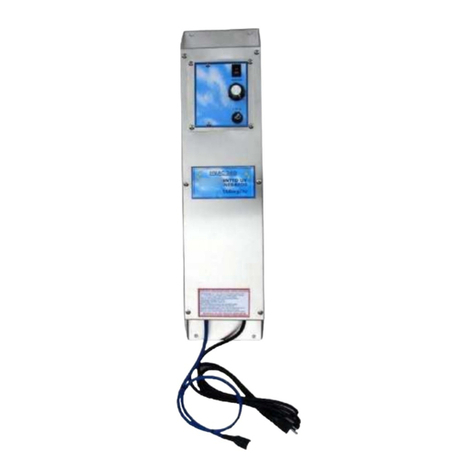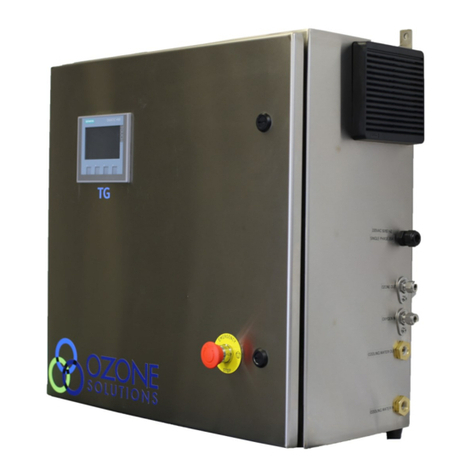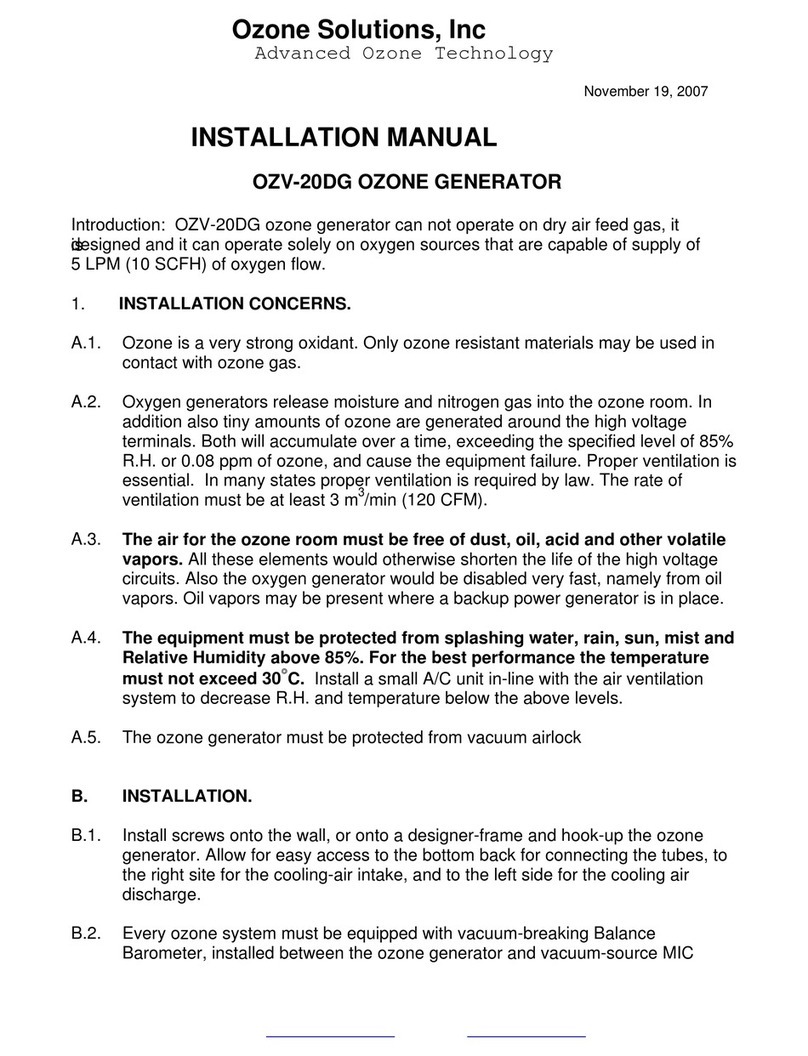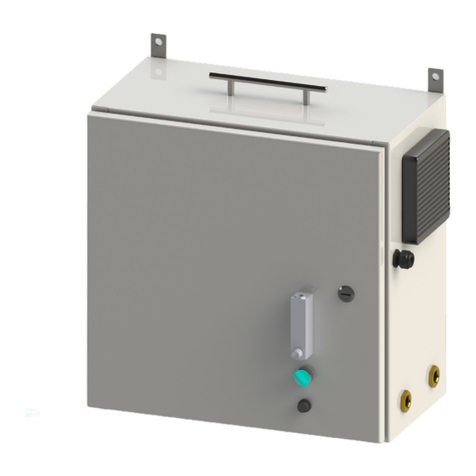
4/WZ SERIES
OZONE SOLUTIONS
SECTION 1
SAFETY PRECAUTIONS
Ozone is a powerful oxidizing agent. Observe strict
operating procedures while using ozone equipment.
It is imperative that only ozone compatible materials
are used in conjunction with the ozone system.
Ensure that the Ozone Generator is in a well-ventilated
area. Do not allow rain or condensation to contact the
Ozone Generator. The Ozone Generator is not weather
proof. The unit must be operated indoors or in an
enclosure in a non-condensing environment.
Carefully review and familiarize yourself with the
following important safety information concerning the
Ozone Generator:
1. Ozone is an extremely aggressive and powerful
oxidizer. The Occupational Safety and Health
Administration (OSHA) 8-hour exposure limit is
0.10 PPM. The OSHA 15 minute exposure limit for
ozone is 0.3 PPM. Above 0.3 PPM, there is the risk
of damage to respiratory tissues.
2. People who have no sense of smell should not
operate this equipment.
3. Never attempt to verify ozone production by directly
breathing or smelling the ozone outlet.
4. The Ozone Generator contains high voltages.
Unauthorized entry can result in serious injury or
death. For service instructions, contact Ozone
Solutions.
5. Make sure all tubing connections between the
Ozone Generator and the injection point are secure
and in good working condition. Failure to do so
could result in the discharge of ozone into an
undesired space.
INTRODUCTION
The Waterzone series ozone systems are a complete
oxygen preparation, ozone generation, and injection
system that include the integrated oxygen sieves, ozone
generator, pump, injector, and contact Tank. External
compressed air may be required.
This skid has a control system to control all functions
of the ozone generator and ozone injection system
automatically. Each of these functions will be described
in this manual. Please read and familiarize yourself
with this and other related operation manuals before
use.
THEORY OF OPERATION
The purpose of this system is to use ozone as a
disinfectant for water. Ozone is a very reactive gas
that must be produced on site. Ozone in the gaseous
form is also very unstable and difcult to manage in
an effective way for any reliable disinfection processes.
Because of these factors, the ozone is dissolved into
water whereby it can be applied effectively to the
surface of any food product or other item that may
require disinfection.
The ozone is produced using ozone generator cells. The
ozone generator produces 100-200 g/hr (depending
on model) of ozone from oxygen feed gas. This oxygen
feed gas is concentrated from compressed air supplied
by the internal oil-free air compressor, if equipped,
or the provided plant air. The oxygen concentrators
use pressure swing adsorption (PSA) technology
with a zeolite material to purge the nitrogen from the
compressed air leaving 90-95% oxygen feed gas for the
ozone generator. This oxygen is passed through ozone
generator cells which uses a controlled high voltage,
high frequency spark, called a corona, to convert as
much oxygen (O2) into ozone (O3) as possible. The result
is 5-8% ozone in an oxygen stream of 32-64 SCFH
leaving the Ozone Generator at pressures up to 14 PSI.
The process of converting oxygen into ozone is an
energy intensive process that generates a large amount
of heat. This heat must be removed from the ozone
generating cell for efcient and reliable operation. The
ozone generator in this system uses water cooled cells
and a water chiller to remove this heat. The water chiller
has an onboard pump to operate the cooling circuit.
This ozone/oxygen mix is dissolved into the water using
the Ozone injection system. To efciently dissolve this
ozone into the water, a Venturi Injector is used to pull
the ozone into the water. The water pump is used
to increase water pressure prior to the venturi. The
pressure at the outlet of the venturi must be at least
20 PSI lower than the inlet pressure. This pressure
differential creates a vacuum that will pull the ozone
NOTE: If the operator has asthma, he or she must
not enter an airspace that has a signicant ozone
concentration. Ozone can induce an asthma attack.
































